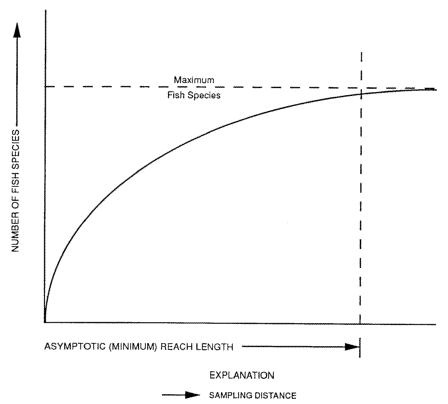1986; Angermeier and Schlosser, 1989; Lyons, 1992). The general relation between sampling distance and number of fish species collected indicates that as sampling distance increases, fewer species are collected until an asymptote is achieved where increasing sampling reach length causes little or no increase in the cumulative number of fish species collected (fig.1). A sampling reach length that is equal to or exceeds this asymptotic sampling distance is more likely to produce a representative sample of the fish community than a shorter sampling reach length. Therefore, the asymptotic sampling distance represents the ideal minimum sampling reach length required for collecting a representative sample of fish.

Figure 1.--Representation of the relation between sampling distance and the number of fish species collected.
The asymptotic sampling distance or minimum sampling reach length necessary for sampling fish communities is generally stream dependent. Differences in the rate at which the number of fish species collected increases with increasing sampling reach length vary within and among streams (Lyons, 1992). One approach to determining the minimum sampling reach length required at each site would be to initiate an iterative sampling procedure whereby the number of fish species collected over the distance sampled is